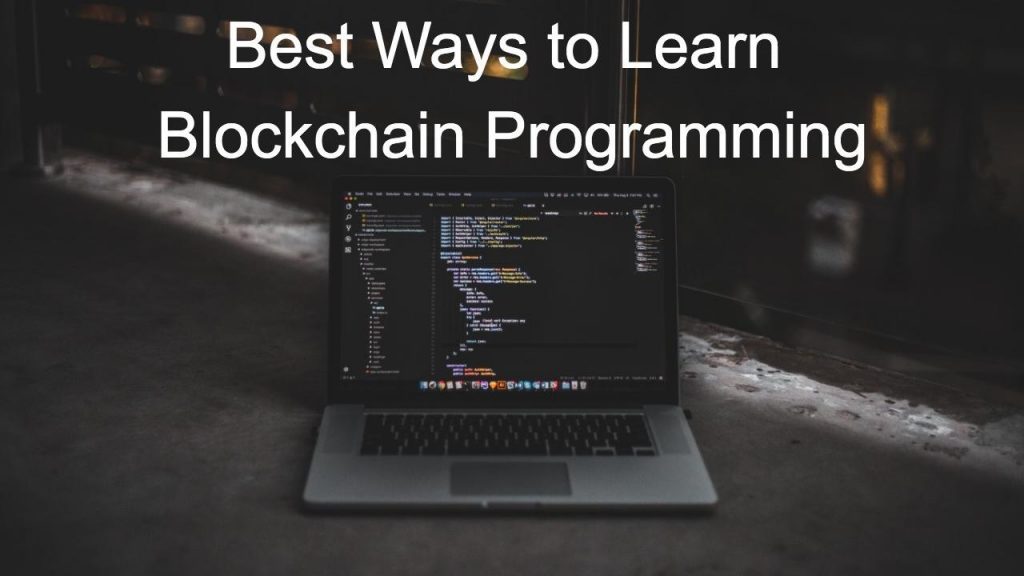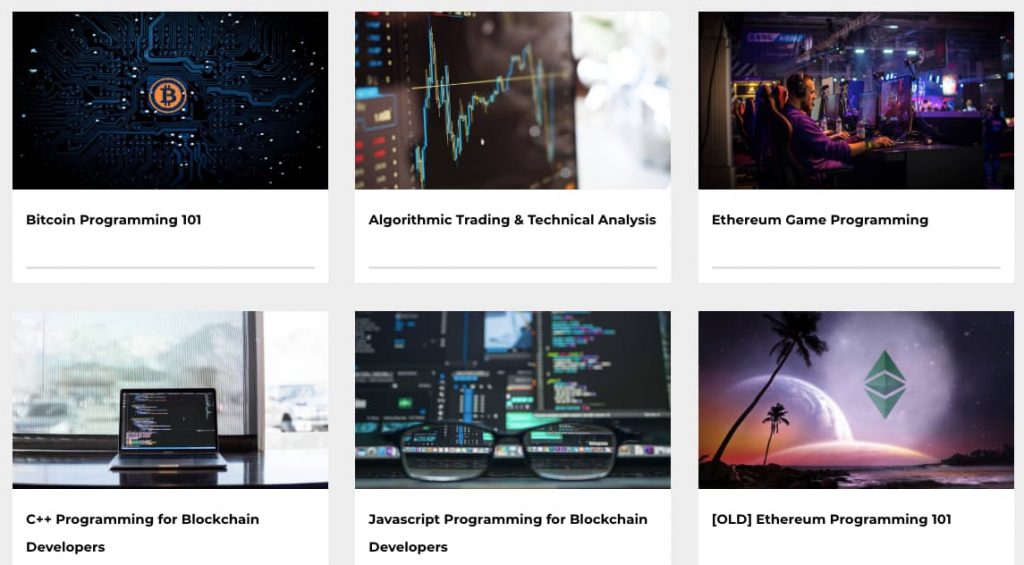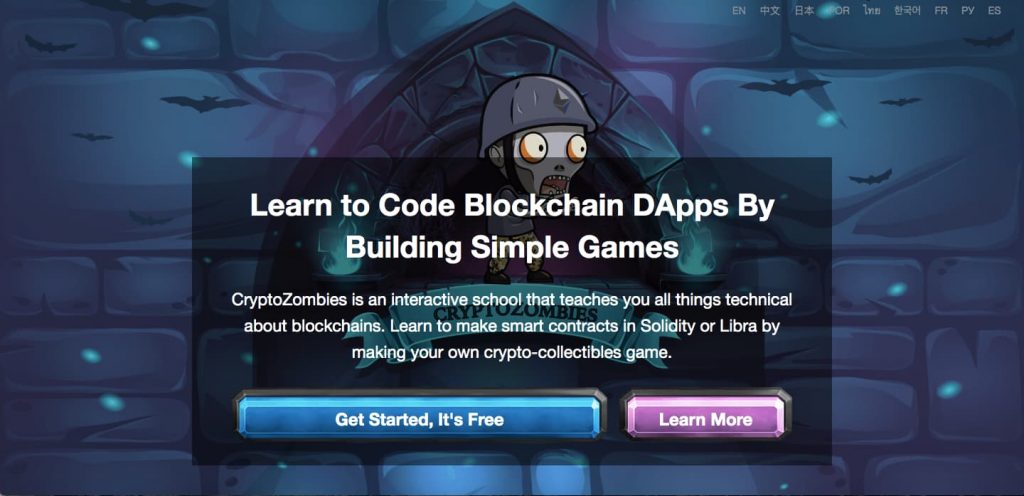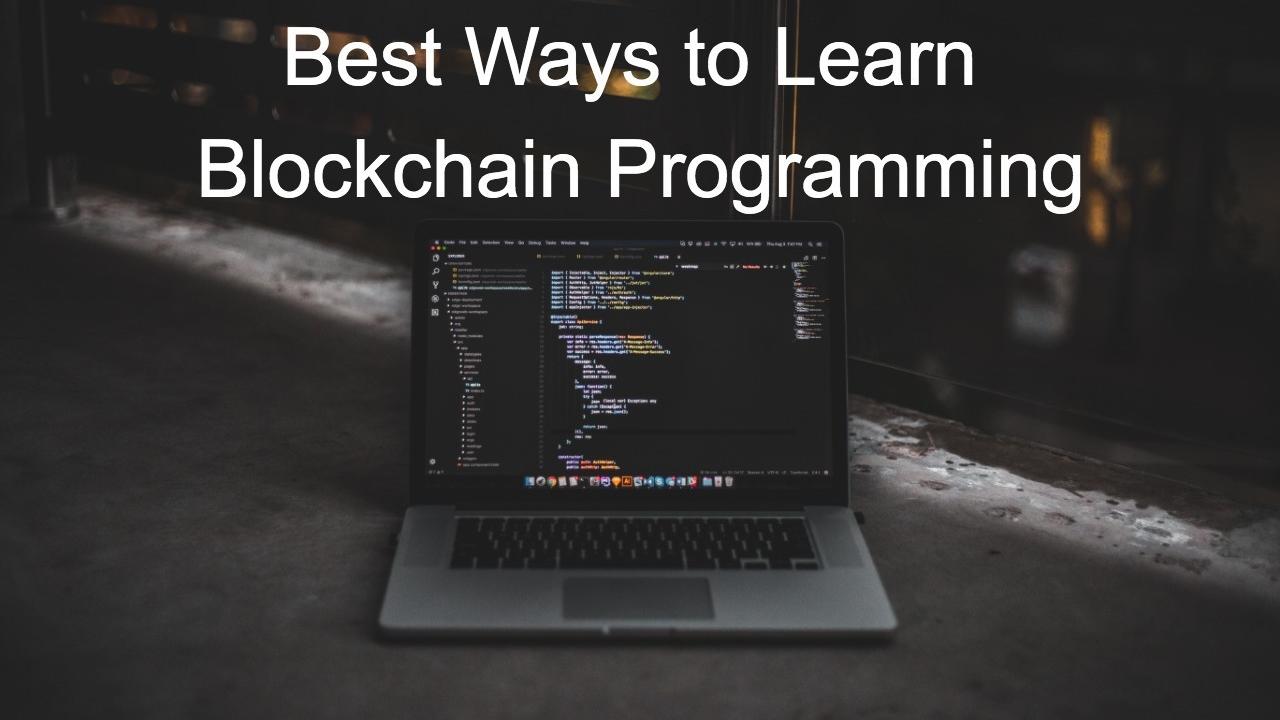
Googling “the best ways to learn blockchain programming” suggests that you have already read about how awesome blockchain is and hints that you may want a piece of the action. Blockchain has been touted as the next big thing after the internet and several global brands such as Amazon, Microsoft, Facebook, and IBM, are already in on the action.
There’s an increase in the demand for skilled blockchain professionals in the midst of this frenzy. Employers are searching for blockchain developers, cryptocurrency traders, analysts, software engineers, mining technicians, research analysts, and full-stack developers. Having the right skill set will, therefore, see you swimming in a sea of jobs. Stats from Hired, a San Francisco recruitment firm, supports this claim, saying that blockchain engineers make between $150,000 to $175,000 on average.
Despite the prospects of the blockchain industry, learning how to code and taking your first steps into this sector might seem daunting, especially if your current skills are not programming-oriented. The open secret, however, is that there are a plethora of free, inexpensive, and paid resources online to give you a head-start on your journey. The only downside to having so many resources at your disposal is knowing where to start – the best available options and ways to learn blockchain programming.
Whether you are a hobbyist interested in the blockchain industry, a student looking to learn a new language and follow the latest trend, or an employee hoping to transition into the tech industry, this article will expose you to the best ways to learn blockchain programming. We will walk you through how and where to find the help you need, what programming language(s) to learn, as well as tips to ensure you are on track.
Let’s dive right in…
Best Ways to Learn Blockchain Programming
1. Take an Online Course

Taking an online course is by far one of the best ways to learn blockchain programming. One of the good things about online courses is that they are often structured and streamlined for users of different levels. You can start off with the fundamentals and “learn” your way up to an advanced user, without having to think twice about which lesson comes after what.
We created Ivan on Tech Academy as a great place to start your journey as a blockchain programmer. The courses on the platform are well structured to take you through the fundamentals of blockchain, smart contracts, consensus algorithms, decentralized applications, and EVMs, amongst others.
If you are entirely new to blockchain, then we recommend starting with the Academy’s Blockchain 101 course. By the end of the course, you should be able to decide if blockchain tech is right for your business, and understand some of the tech’s fundamentals as a hobbyist or developer.
Once you are done with the basics, you may want to jump into the main stuff and get introduced to coding languages such as JavaScript and C++. At this point, you will probably get your hand dirty creating and deploying your first smart contract.
In general, depending on your reasons for learning blockchain programming, there are a plethora of courses on Ivan on Tech Academy for both new developers and the more experienced ones. Some of the courses include:
- Blockchain and Bitcoin 101
- Ethereum 101
- JavaScript and C++ for Blockchain
- Ethereum Smart Contract Programming 101
- EOS Programming 101
- Blockchain Business Masterclass
- Ethereum Smart Contract Security
- Ethereum Game Programming
- Unity Game Programming
- Enjin Blockchain Game Programming
2. Online Video Tutorials
From learning how to sing to learning how cook, or even build a house, there is really nothing you won’t find on YouTube. YouTube and online video tutorials are another great way to learn blockchain programming. They are so effective because over 80% of learning takes place visually. Thus, making videos a better bang for your learning time and buck.
A quick search on YouTube will reveal 100s of channels and multiple videos for blockchain developers of all experience levels; from YouTubers live streaming their coding exercises to programming veterans troubleshooting specific errors in different programming languages.
Whilst YouTube videos are entirely free (which is a good thing), they have their downsides which comes from trying to find the right videos to aid your learning process. To this end, you are sure to find crappy content and those loaded with good stuff – it’s your job to search. Finally, any YouTuber can come forward and claim to be an expert programmer, and learning from a terrible blockchain programmer could affect your coding skills or even discourage you.
3. Use a Gamified App

Let’s be honest, reading lines of code in a book or on a screen is tiring. Following through a YouTube tutorial can also become quite cumbersome because we all want to jump to the part where we start building some real stuff. Most tech instructors also agree that students often have a difficult time understanding programming logic. This makes interactive blockchain programming tutorials perfect learning materials in demystify abstract concepts.
Gamified blockchain programming means the use of game techniques, game thinking, game elements, and game methodologies and framework to motivate users, simplify concepts, encourage desired behavior, and increase the user experience in a non-game context.
One of the benefits of gamified apps is that they improve attention and memory. Research has proven that gamification and mental stimulation is effective at keeping learners psychologically aroused. Feelings of excitement, stress, and being alert stimulate the brain’s ability to store new information. It also makes it easy for learners to stay focused and spend more time behind the screen without getting distracted. According to research by BBC Horizon, games increase attention span and memory by up to 30%. Another research by the National Academy of Sciences suggested that gamifying and simulating visual data makes it easier to memorize than audial information.
Gamified apps are in no doubt a very effective way to learn blockchain programming. However, be careful you don’t get too caught up in the fun and forget your learning goals. Combining gamification with online courses and video tutorials is a sure-fire way to speed up your learning progress.
Games like CryptoZombies and JSRobot are fan-favorites when it comes to learning how to code blockchain DApps in Solidity and JavaScript through gaming.
4. Join a Blockchain Programming Community

Remember the saying that “no man is an island”? The same holds true in the world of blockchain programming. You will need to keep learning to stay relevant and there is no better place to stay updated and get guidance than amidst like-minded professionals.
Blockchain is still in its nascent stages and source material as to the technology is still relatively new in comparison with other database-oriented languages. What this means is that you could run into coding obstacles from reading a book or watching a video. An online or offline blockchain programming community may be your only rescue in such a situation.
There is virtually a user group for just about every major programming language. The good thing about these communities is that you will be exposed to experts with varying degrees of experience. There is also the possibility that someone else may have encountered and solved the coding challenge you are currently facing.
Developers in a community will often discuss what’s new in their language of choice, challenges they have encountered, as well as different ways of solving problems. As a new developer, you will meet people, learn about industry standards, and gain practical advice on the necessary skills you may need to accomplish your goals. You may also have some of your rigid ideas challenged.
Some of the popular communities for blockchain developers include Reddit, Blockgeeks, Medium, and IEEE Blockchain community.
5. Attend a Coding Boot Camp

Although there is a lot of controversy surrounding the cost and effectiveness of coding boot camps, statistics speak in their favor. A 2017 survey by Indeed revealed that 4 out of 5 US companies have at one point or the other hired a boot camp graduate, with HR managers hinting that they would do it again. Another survey by Course Report found out that around 80% of the graduates from coding boot camps got employed using the skills they learned in boot camps.
Boot camps are arguably the most expensive option on this list. On average, you may spend up to $15,000 to learn blockchain programming in a boot camp. This is not to say that they are your golden ticket to landing a blockchain developer job with Amazon.
If your dream is becoming a professional and full-time blockchain developer, then an intensive and in-person boot camp might suit you. It is faster and more affordable than a traditional college degree. You will also be taught the skills you need to succeed within the blockchain industry in a fraction of the time you might take to learn on your own or earn a computer science degree.
Before jumping to attend the next available coding boot camp, you need to evaluate the return on investment you can expect from completing the course. Will it be worth your time, money, and efforts or will your chances of securing your desired job increase? Will there be an increased income to your current job? Answering these questions can help you in the decision-making process since a lot of money is involved here.
Practice!!!
Practicing is the icing on the cake and applies to all the other options that have been listed above. Practice makes perfection and irrespective of the number of online courses or coding workshops you complete, the ultimate proof of your coding skills comes from creating projects.
Failing to practice is as good as fueling a car and parking it in a garage all year round. Over time, several parts of the car will begin to deteriorate. Whilst your personal project does not have to be as ambitious as creating the next Facebook, it should be worth your time and it should involve constant improvements.
Be careful not to get discouraged by your inability to create complex projects at first. You will become proficient with more practice. Instead, start small, but think big. Your practice time and project should involve the skills you’ve learned from an online course or tutorial. Always remind yourself that learning blockchain programming is more of a marathon instead of a sprint. Plan and practice.
What Blockchain Programming Language Should I Learn?

At this point, you are probably asking what the best blockchain programming language is at this point. This section has some quick answers to that question. Here are some top programming languages for blockchain.
Since it’s quite a big question, we made a more in-depth article on this subject.
C++
Despite being the oldest on this list, C++ has retained its superiority in several major techs including blockchain. Its evergreen nature makes it a fundamental language for blockchain coding. The first successful implementation of blockchain, Bitcoin was written in C++. This powerful and ultra-precise programming language has consistently topped the list of blockchain programming languages for definite reasons such as its advance multi-threading capabilities, better memory control, code isolation, and core object-oriented features.
Although the learning curve for learning C++ is a bit steep, any efforts you put into learning the language will pay off significantly, since most blockchain techs are written in this language.
Python
If the idea of C++’s complex nature scares you, then python might turn out to be the best blockchain programming language for you. The language’s structure is simple, precise, readable, and minimalistic. Python also has a massive crowd of both new and established developers through its opensource support. There is literally a Python plugin or library for every problem you encounter as a developer working on your blockchain project.
Although there is a consensus that blockchains built on top of Python tend to fare poorly during complex cryptographic operations, its simplicity does not translate to inefficiency. Python is efficient in prototyping ideas quickly and is good enough to build complex blockchains that are stable and reliable.
Solidity
This is arguably the fastest growing blockchain language on this list. The program was made by and is being used by Ethereum, the second-largest cryptocurrency after Bitcoin. Solidity is one of the most efficient when it comes to ease of creating smart contracts.
Solidity is a high-level language that combines scripts and functions from JavaScript with C++ classes. The language is beginner-friendly and well suited for veteran blockchain developers.
JavaScript
JavaScript is a go-to language for making simple yet tamperproof blockchain solutions. It remains the undisputed king of the web and this is one of the edges it has over other blockchain programming languages – it is already installed on most systems. This shifts the focus to application logic instead of integration. The inception of NodeJs has added to the possibility of using JavaScript to build highly-functional and creative blockchain applications.
Top Tips to Learn Blockchain Programming Faster
If you have ever tried to learn programming, then you will agree that starting out as a newbie is not easy. It is possible to get all fired up and then lose your motivation along the way. Here are some tips to help you stay on track and learn faster.
Practice
Practicing is so important that it had to appear twice in this article. Without over flogging the subject, the fastest way to learn blockchain programming is by getting your hands dirty – try new things; work on a project.
Celebrate Your Victories
Don’t expect to build the next Ethereum blockchain after a few months of study or a few boot camps. Give yourself time to grow and while at it, enjoy the learning process. Completing a coding task without any error is worth celebrating as a beginner because there are many times you will feel like throwing in the towel.
Use Google
Staying too long on an error-code is time-wasting and kills motivation. After a few failed attempts in trying to figure out why your code is broken, look for solutions online. There is every chance that you are not the first person to face such a challenge and someone already has a solution. Simply copy your error message into Google and in no time, you may get the correct answer. If this doesn’t help, you can post your problem on a developer’s forum.
Conclusion
Blockchain is changing the world as we know it and several indicators point to the fact that the tech will play a huge role in how things are done in several industries. Since the advent of Bitcoin in 2008, the popularity of the tech has continued to grow over the years. However, blockchain is still in its experimental stages and offers immense job opportunities for skilled developers.
Although there are thousands and maybe millions of active developers eyeing the few blockchain gigs out there, the market is in constant demand of people who know their onions. This is why positioning yourself as an expert now will set you apart from the pack.





